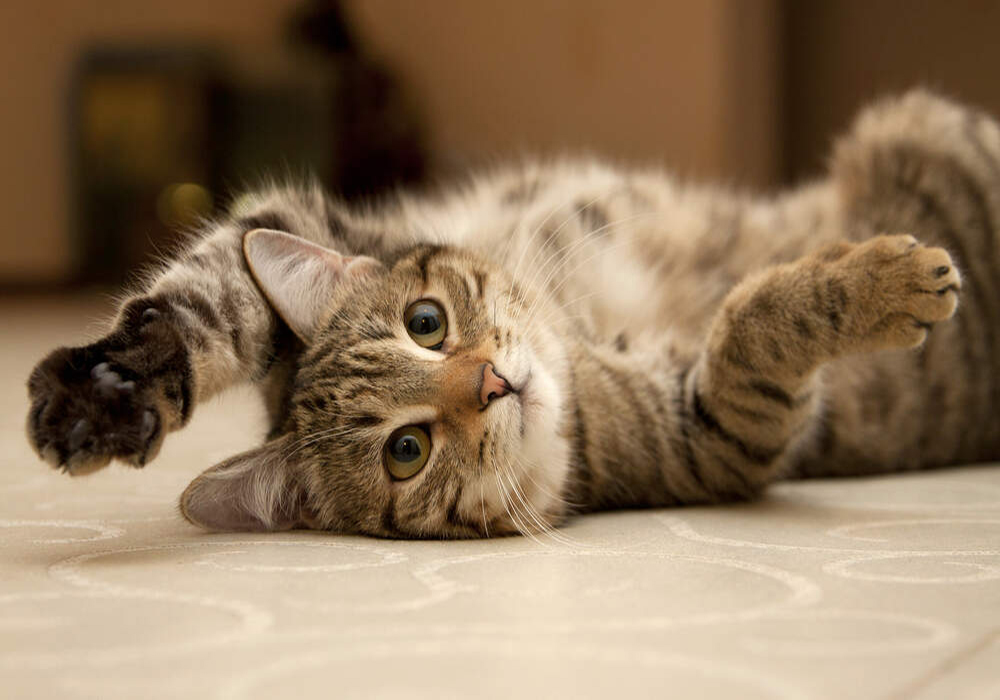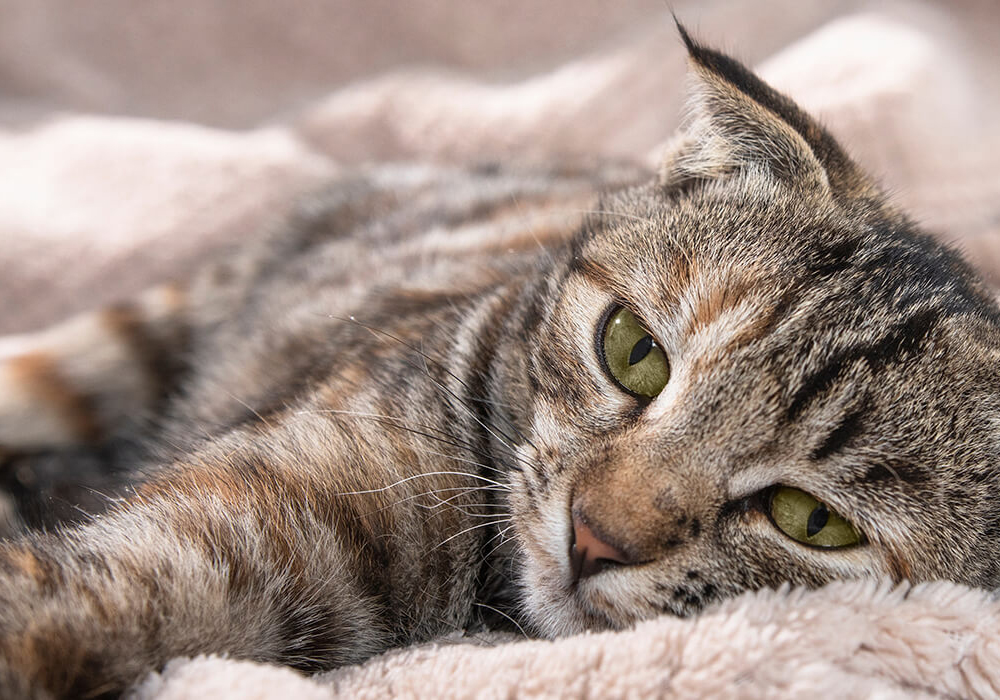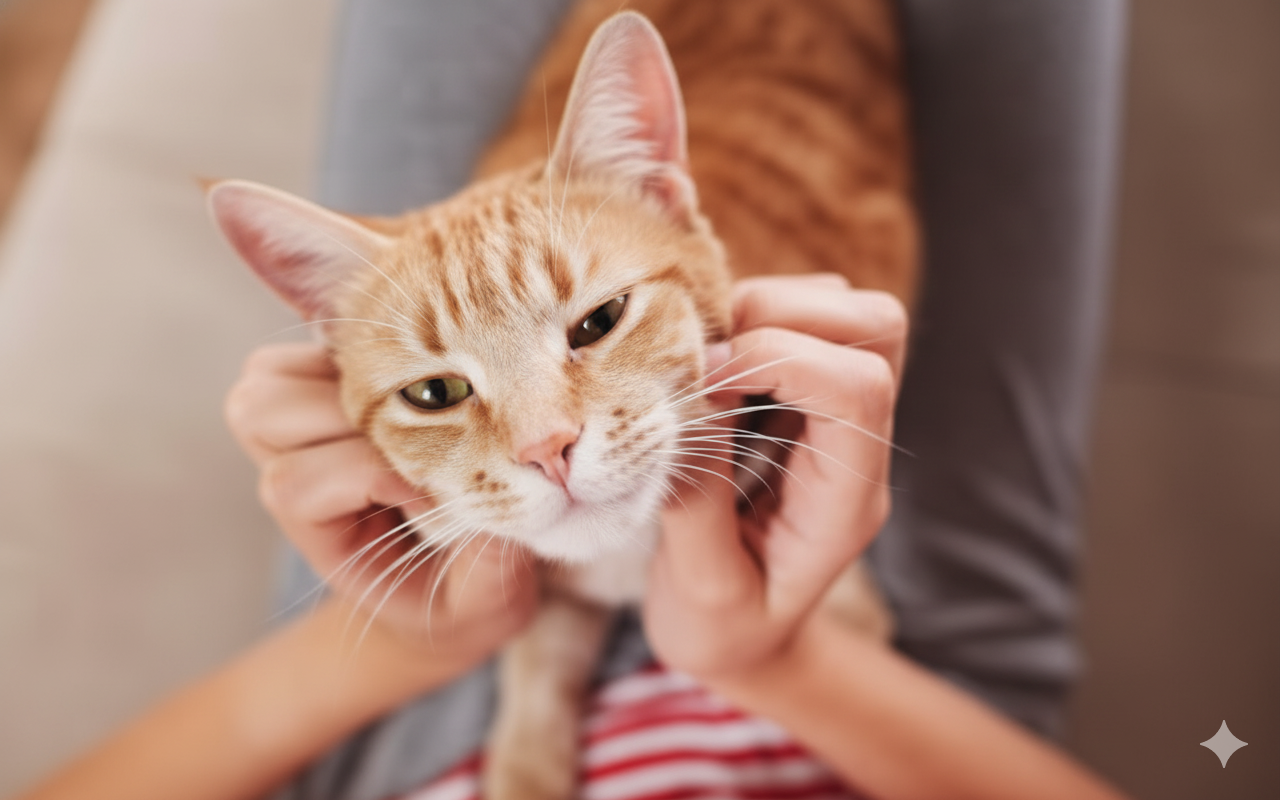Want to understand what your cat is really saying? Discover the meaning behind your cat’s behaviour
Cats communicate in subtle and often complex ways, but understanding their body language can really help deepen your bond. Recognising the signs that your cat is content—or when they need some space—can make life easier for both of you. Unlike dogs, cats don’t have as many facial muscles, so their expressions aren’t as obvious. That’s why it’s important to pay attention to even the tiniest shifts in their posture or movements. These small cues can actually reveal a great deal about how your cat is feeling.
Signs Your Cat Is Happy
Tail held high;
Calm, loose body posture;
Soft, content-looking eyes;
Gentle, slow blinks;
Lying on their back and rolling over;
Ears facing forward and at ease;
Whiskers in a neutral, relaxed position;
Seeking attention or affection;
Rubbing their face or cheeks against you or objects

Signs Your Cat Is Unhappy
Over-grooming or constantly licking themselves;
Fur standing on end or appearing fluffed up;
Growling, hissing, or lashing out with their paws;
Ears turned sideways or pinned back;
Eyes wide open with enlarged pupils;
Hiding or avoiding people and other animals;
Frequent licking of the lips or mouth;
Moving cautiously and appearing tense or on alert

How Is My Cat’s Mood?
Curious
Ears are forward and pointy;
Eyes open with small pupils;
Whiskers are pointed forward
Anxious
Ears pricked with one ear to the side;
Eyes open with wide pupils;
Whiskers are pointed forward
Stressed
Ears are flat;
Eyes open with wide pupils;
Whiskers are pointed forward or curving down
Depressed
Ears forward but drooping;
Eyes open but looking down;
Whiskers are drooping
Relaxed
Ears are relaxed, forward and rounded;
Eyes shut or half closed with small pupils;
Whiskers are relaxed and closer to the face
Can I Use Body Language To Communicate With My Cat?
Learning to read your cat’s body language can really help you connect and communicate with them. One key thing to remember is to avoid direct staring—cats can interpret this as a threat, which may make them feel uneasy or defensive. If your cat appears calm and comfortable around you, you can use your own body language to return the message. Try giving them a slow blink and gently turning your head to the side. If your cat feels safe and trusts you, they might blink back in return. Avoid using sounds like “puss puss” or any noises with a strong “ss” sound, as this can resemble hissing to your cat and may make them feel threatened or uncomfortable.
Purring: What Does It Really Mean?
Purring is often associated with happiness—but that’s not always the case. If your cat’s body language is relaxed while they purr, it usually means they’re content or enjoying attention. However, cats may also purr in situations where they’re stressed or trying to soothe themselves—like during a vet visit. In some cases, cats even purr when they’re in pain. So, it’s important to consider both their body language and the situation to understand how they’re truly feeling.










